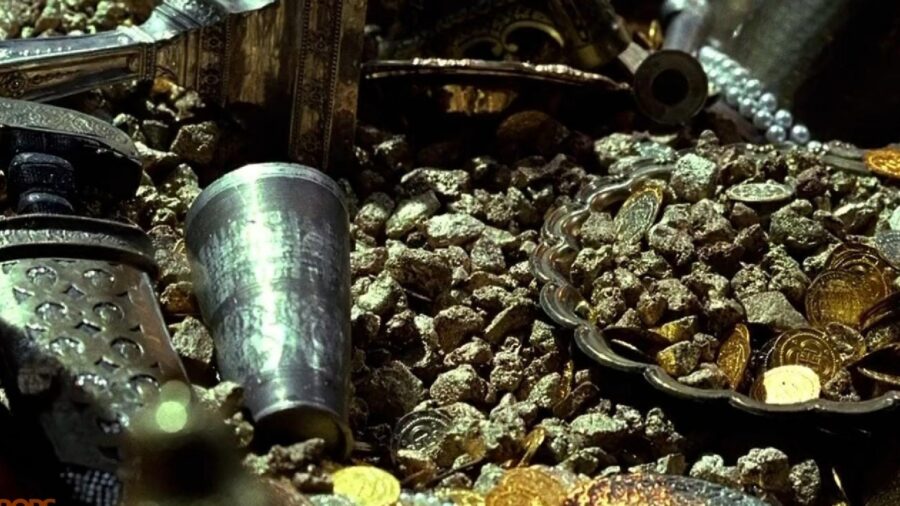Alien Metal Found In Bronze Age Treasure Hoard

Ancient humans have always been fascinated with the sky, as our early ancestors used the stars to not only chart their lives but also their destinies. So, naturally, everything that fell down was regarded as a divine gift with mystical powers and, thus, extremely valuable. One of the most notable examples is King Tut’s dagger, which was forged out of “star metal” at a time when precise material science wasn’t really a thing. But that’s not the only example—recent studies of the Treasure of Villena revealed that some of the gold objects contained in the cache were actually made of alien metal.
High Percentages Of Nickel

Now, the concept of alien metal might sound like the researchers discovered an alloy comprised of elements that aren’t found anywhere within our periodic system. The truth is a bit different: we do know all the elements within the alloy used to make the objects, as they’re quite common here on Earth.
However, their ratio is what reveals the secret of their origin; namely, some of the objects from the Treasure of Villena contain iron and high percentages of nickel, indicating the alien origins of the metal.
Gold

The Treasure of Villena is an important archeological find, and it is often regarded as one of the most important examples of Bronze Age goldsmithing of the Iberian Peninsula and the whole of Europe.
But what made the discovery of alien metal within the collection possible was rust, the common iron oxide, or the corrosion of iron caused by its reaction with oxygen in the presence of water or moisture. That’s rather strange, considering that gold, a non-ferrous metal, doesn’t actually rust or tarnish.
A Gift From Above

As it turns out, a few of the objects from the collection have turned dull, while some have caught rust, which indicates that they are ferrous in nature (they contain iron) and that they’re actually forged.
This is rather strange because smelting iron didn’t start until some 350-650 years after the treasure was created. Further analysis showed that the pieces weren’t made of metal from beneath the ground but from alien metal that descended upon our planet from the heavens—a meteorite falling from the sky.
Early Iron

It turns out that meteors are usually rich in iron, which allowed ancient humans to process it and form it into jewelry and other decorative items long before we figured out that we could extract it from the Earth.
It’s worth noting that iron is quite a malleable material; it’s incredibly soft and easy to shape and mold—on the Mohs scale of mineral hardness, gold ranks at 2.5-3, whereas pure iron ranks closer to 4 out of 10. So, while the Treasure of Villena predates our knowledge of iron smelting, how can we be sure that we’re dealing with alien metal?
Metalworking Tech

Well, iron from meteorites usually has a much higher nickel content compared to iron that’s extracted from the Earth; Earth’s iron ore usually contains up to 4 percent nickel, while iron from the meteorites ranges from 5 percent to 35 percent.
That range usually provides iron with greater corrosion resistance, which is why many of the decorative objects made from alien metal turn dull or very rarely rust. What makes this discovery important is that it suggests that metalworking technology was far more advanced in ancient times than we originally thought.
Source: Science Alert











